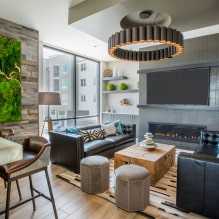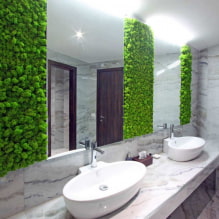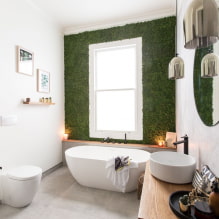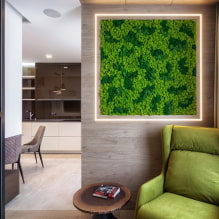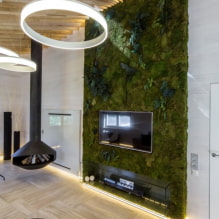Which type is better to choose?
Living moss
Initially, living walls or decor were made from natural forest lichens: but this option was quickly abandoned, since moss in apartment conditions required too much care – from maintaining high humidity to constant watering and spraying. To make the task easier, the plants began to be stabilized.
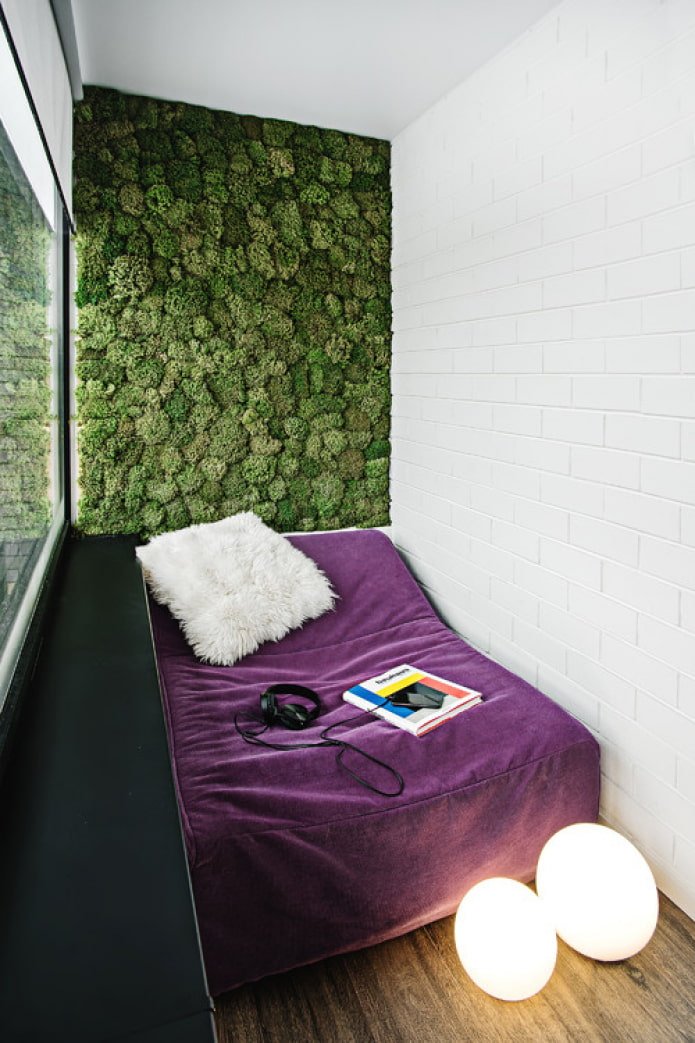
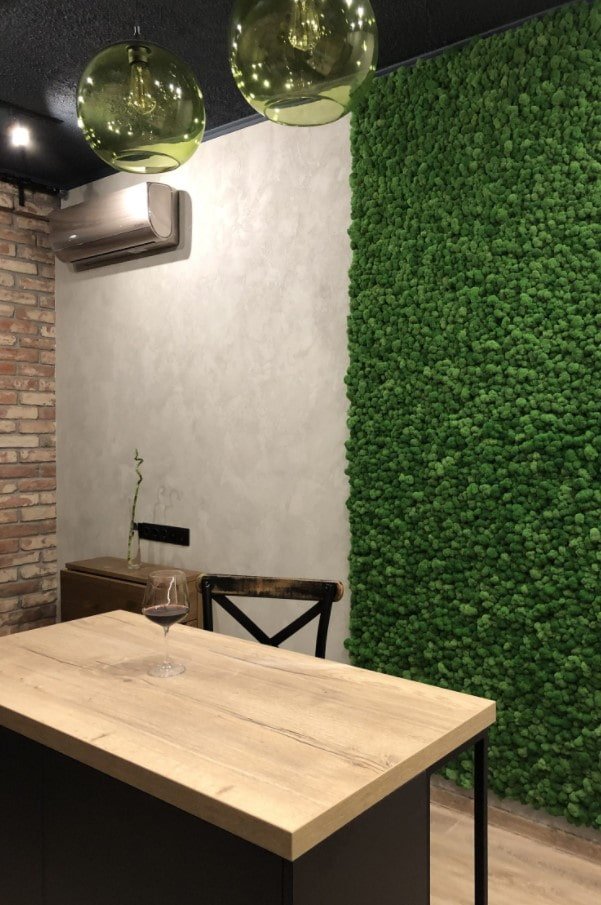
Stabilized moss
A natural material that has undergone a “preservation” process, allowing it to retain its original appearance and softness for a long time. To create a decor from living moss, natural plants of various species are collected.
The standard raw material is considered to be cladonia – a lichen widespread in forests, tropics, deserts. After assembly, stabilization is performed: the reindeer moss is impregnated with a glycerin solution, which allows it to retain its natural appearance for 6 years.
A phytowall made of stabilized moss does not require special care and at the same time looks fresh. In addition, it is absolutely environmentally friendly, but I recommend ordering installation from professionals.
Various types are used as raw materials for stabilization:
- Reindeer moss is the most popular lichen. It has a minimal cost and a huge selection of colors. So you can easily create a moss wall according to your preferences.
- Plastic – occupies an average position in cost. It has a small and pleasant to the touch pile. Most often used to create panels or in combination with hummocky moss.
- Humpy moss is the most expensive type. It differs from the others in its dense structure and volume.

Artificial moss
It is made of polymeric materials with subsequent painting. If necessary, it can easily be given the desired shape. It does not look as natural as stabilized moss, but the cost is much lower.
It does not require maintenance, and its visual qualities are preserved for a long time. In addition, artificial materials are usually hypoallergenic. It is often used to decorate large surfaces and in furniture.

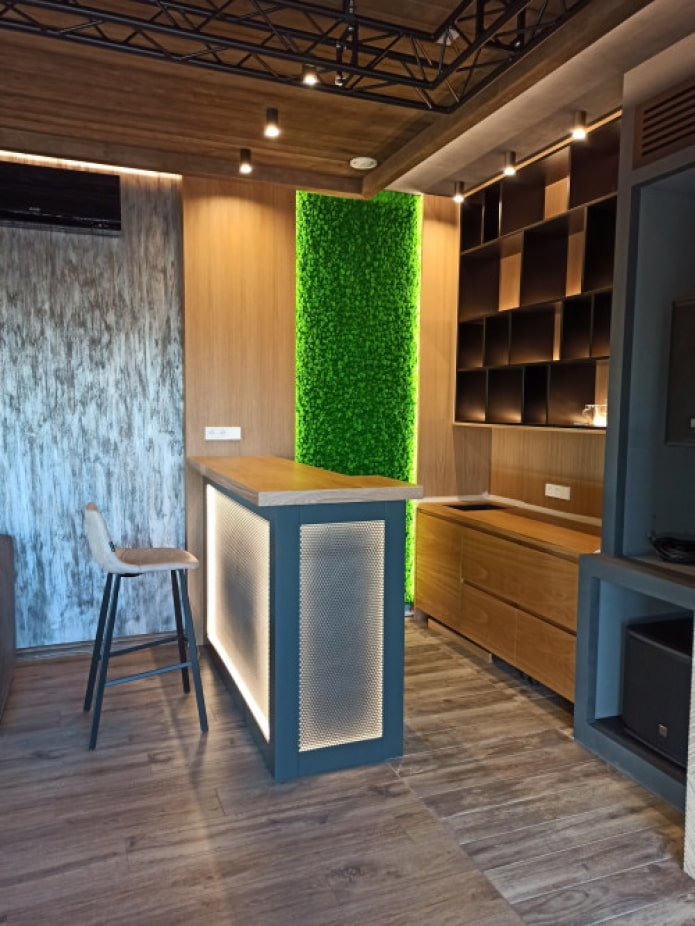
Pros and cons
Advantages:
- Easy to care for. A living wall or picture made of moss does not require feeding or watering.
- Aesthetics. The green composition retains its original appearance for a long time.
- Large selection of colors. Stabilized moss can be not only green, but also yellow, orange, purple, etc.
- Environmentally friendly. Although the moss is processed, it is not inferior to wild plants in terms of naturalness.
Disadvantages:
- Demanding to the environment. Severe frost, as well as direct sunlight, negatively affect the condition of natural decoration, shorten its service life.
- Fear of water. Liquid ingress destroys preservatives, and therefore the moss itself. This fact somewhat limits its use, but stabilized material can be replaced with artificial moss.
- Limited service life. Even in ideal conditions, the greenery will last only 6-9 years, after which it will begin to dry out and crumble: the raw materials will have to be replaced with fresh ones.
The greenery is suitable for almost all styles. But it looks especially good in eco-style, loft, Scandinavian, Japandi, boho, country.
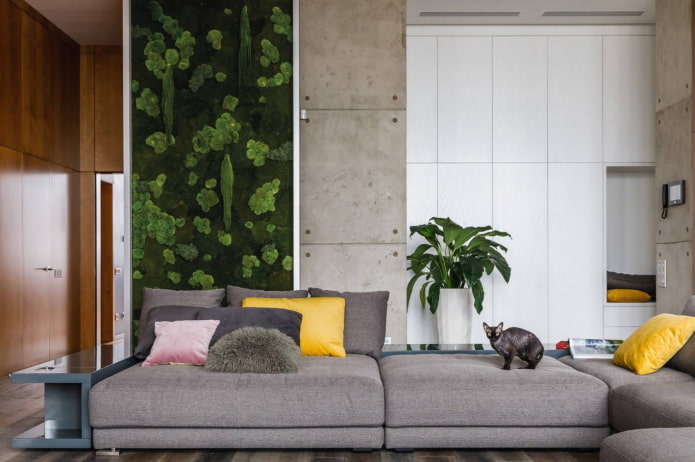
The photo shows a phytowall behind the sofa in the living room
Application options
Phytowalls
Decorative moss can look completely different in the interior of an apartment or house, but the main option for use was, is and remains a moss wall. Large surfaces covered with lichen look incredibly stylish, refresh any design, create a feeling of closeness to nature.
Phytowalls come in different varieties: they occupy space from corner to corner, decorate only individual vertical or horizontal stripes, ledges, niches, columns.
Walls usually play an accent role, highlighting certain areas in the room.
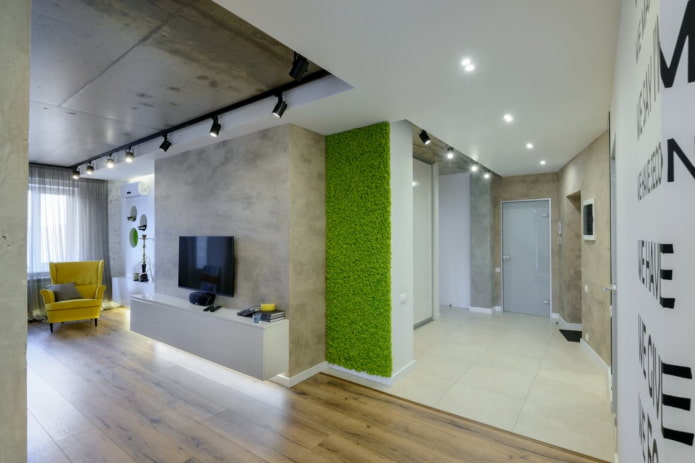
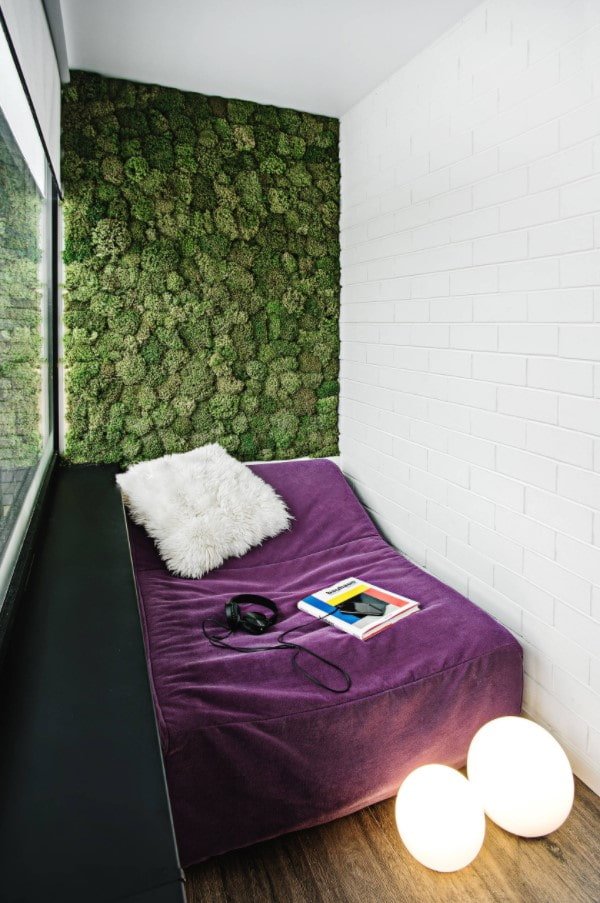
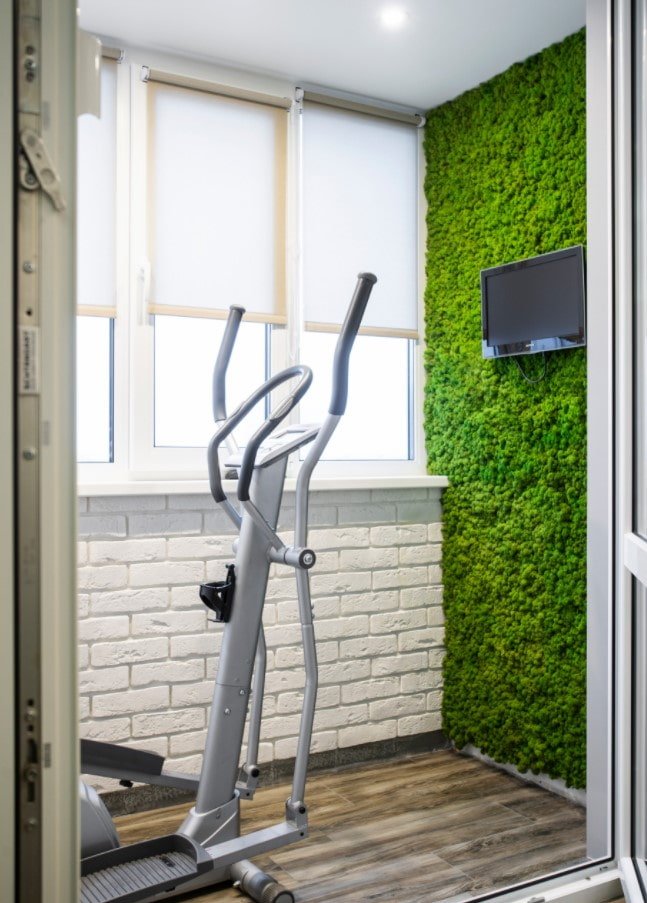
Moss paintings
The second most popular way of decoration. Solutions can be wall panels with a textured surface, framed paintings, wooden panels of unusual shapes, complemented by decorative moss.
In addition to classic shapes: square, rectangle, circle, wall decor can be made in the form of an animal, inscription, star, heart, tree, flower.
Advice! To add functionality to the decor, use it to decorate a clock.
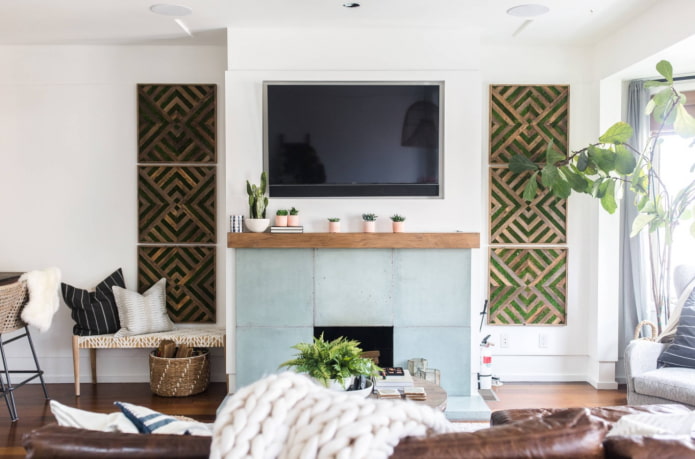
The photo shows wooden panels with greenery
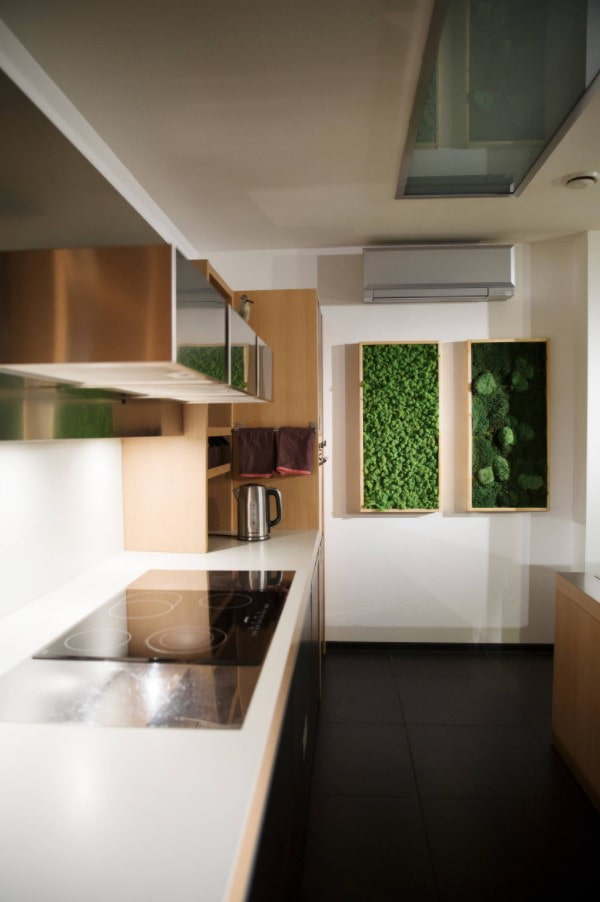
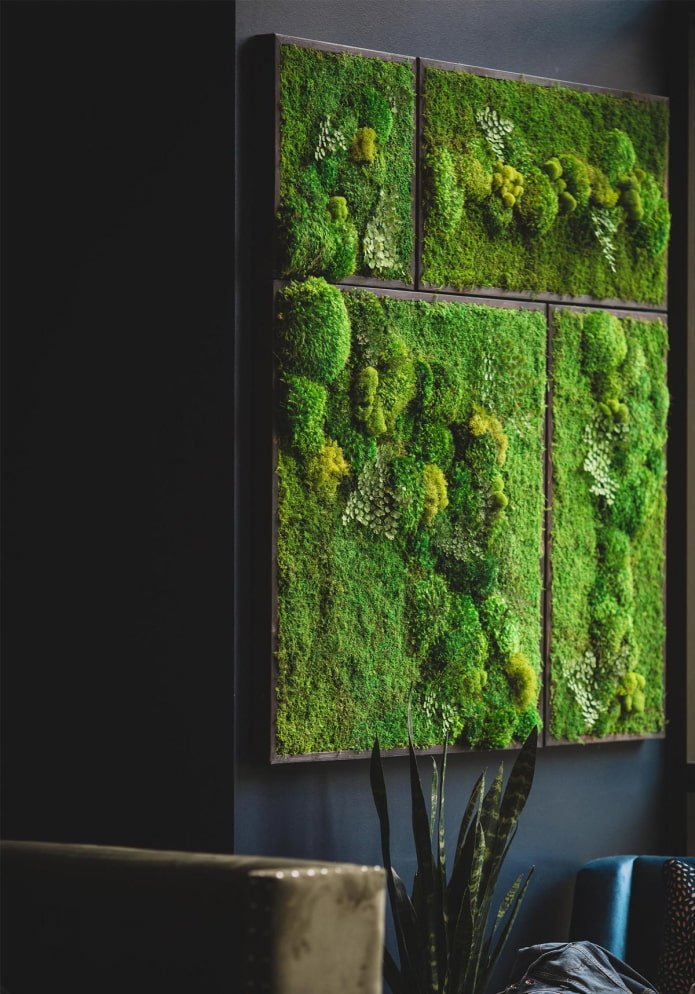
Decorative elements
A wall made of moss is not the only way to use it in the interior. If you are looking for an unusual mobile decoration, take a closer look at compositions in flowerpots, glass florariums, vases.
You can place a “lying” flat panel with a plot you like on the table: for example, in the form of a fairy-tale forest or a beautiful meadow.
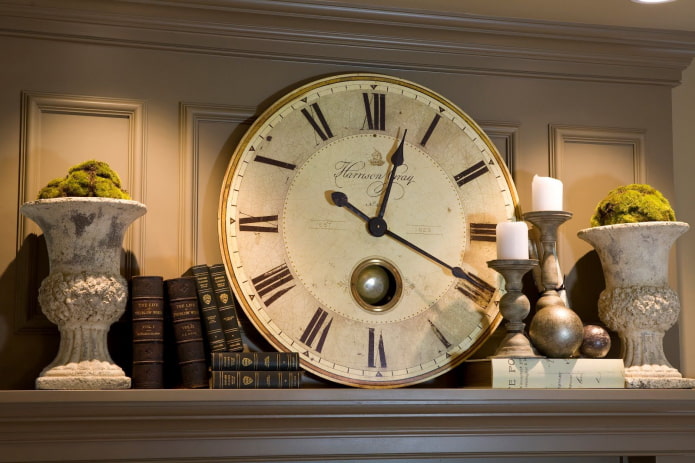
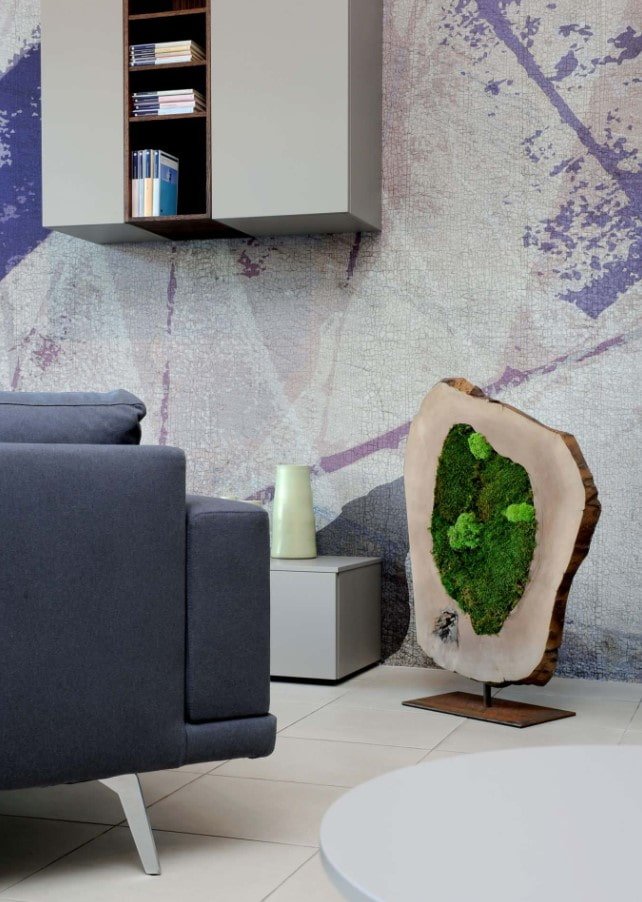
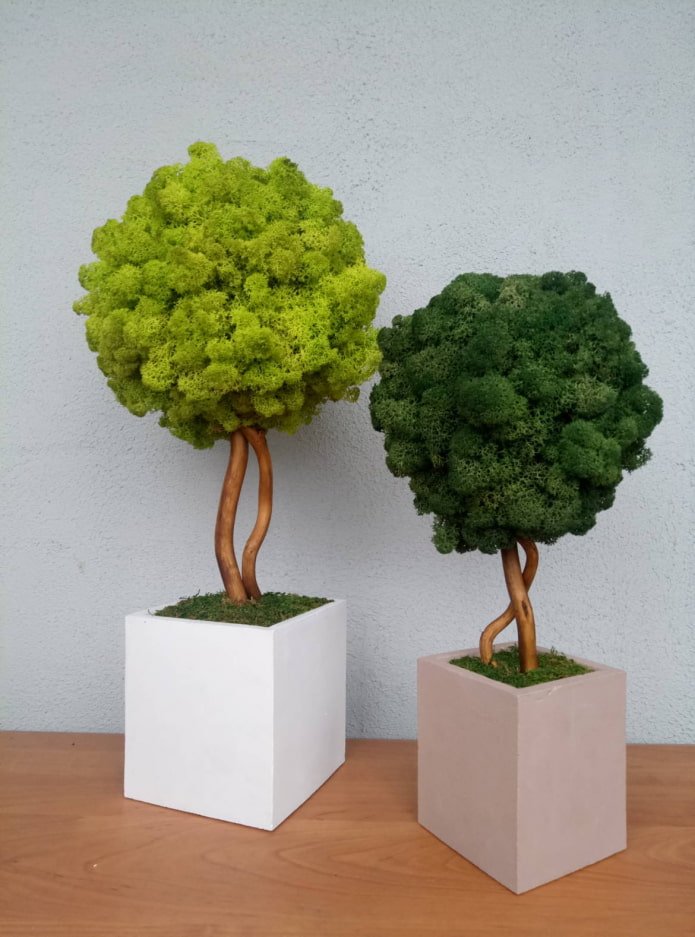
Furniture
Furniture can also be decorated: unusual inserts in a shelving unit or a green “river” in a tabletop will turn ordinary home furnishings into original ones. Bathroom rugs are also made from living lichen.
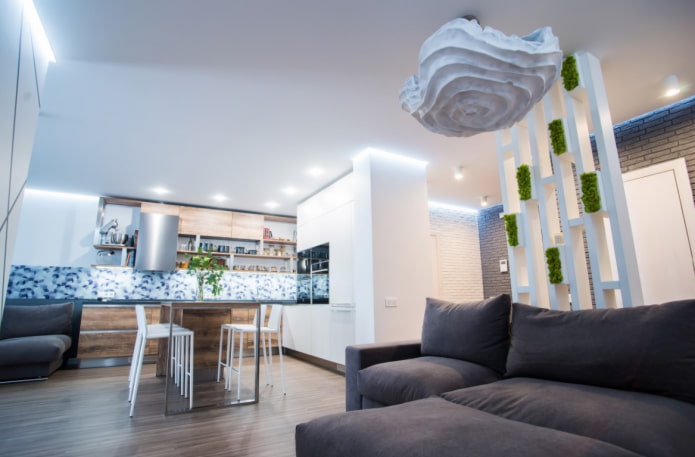
The photo shows green inserts in a zoning partition

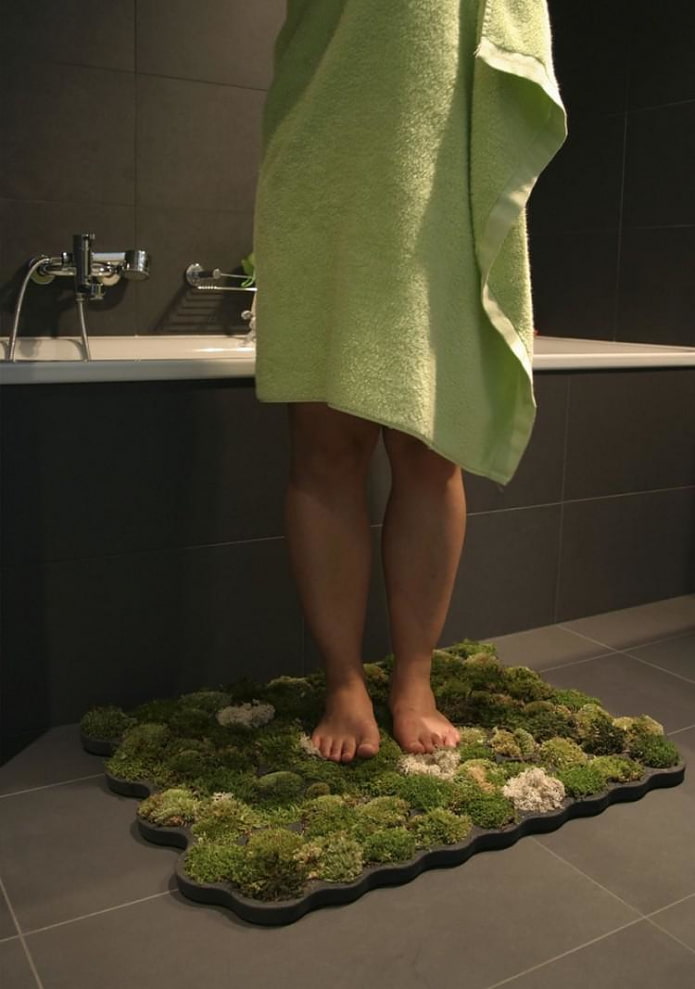
How to care?
The care process depends on the species.
- Live. A growing green garden is initially watered daily: when the plant takes root, watering is reduced to once every 3-4 days, but sprayed every day. It should be placed in a shaded place with high humidity – it is better to put a humidifier or a vessel with water (for example, an aquarium) nearby.
- Artificial. Any non-living plants are dust collectors, so from time to time the decorations will have to be cleaned with a vacuum cleaner or washed with a damp sponge.
- Stabilized. Keep away from ultraviolet light, frosty air, water. Dust is removed with a cold blower – from a hair dryer or a vacuum cleaner with reverse draft.
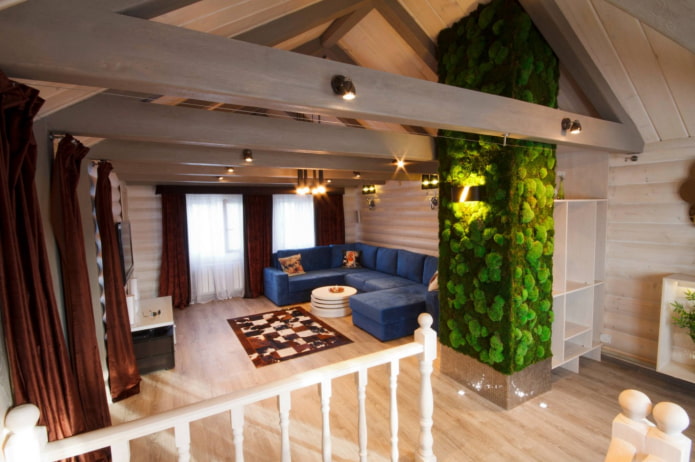
What does it look like in the interior of rooms?
Moss is popular in different rooms, but in each it has its own tasks.
Kitchen
Moss in the kitchen interior is a beautiful accent that allows you to highlight the dining area or decorate the work area. If you decide to make a kitchen apron from lichen, the plant must be protected with glass directly above the sink and in the area of the stove. Or not used at all.
Advice! Do not place phytowalls or panels near radiators – high temperatures combined with dry air are detrimental to living greenery.
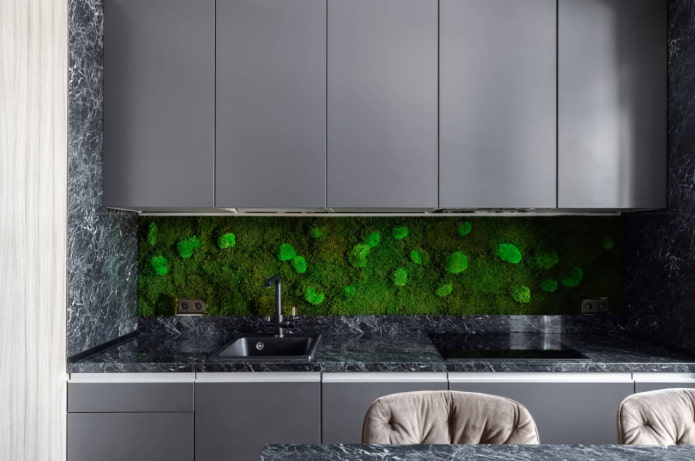
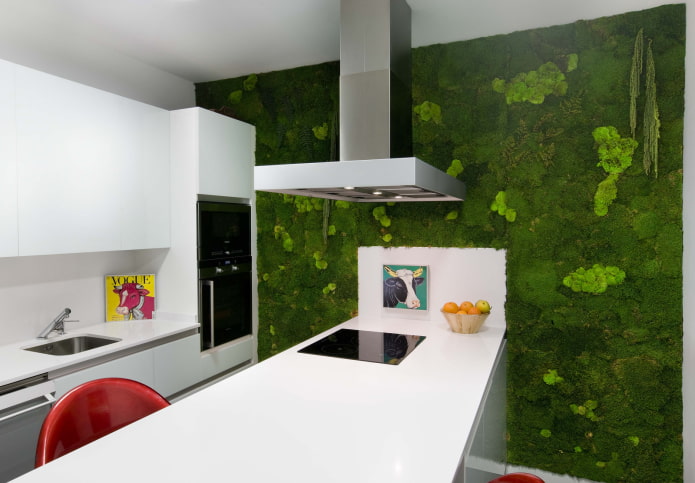
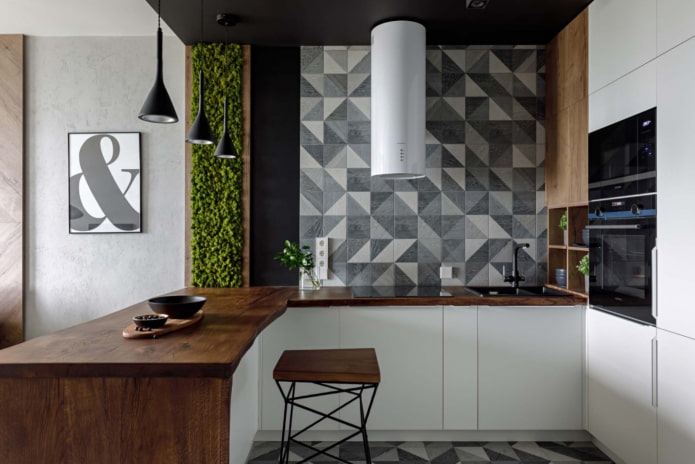
Living room
Moss in the living room decorates one of two surfaces:
- the wall behind the sofa;
- the TV area opposite the sofa.
In the first case, before you start decorating, make sure to eliminate constant friction. Stabilized lichen does not like frequent touches with hands, head, pillows, etc.
It is more convenient to stylishly decorate the area with media equipment using panels: distribute them so that the TV literally grows out of the greenery.
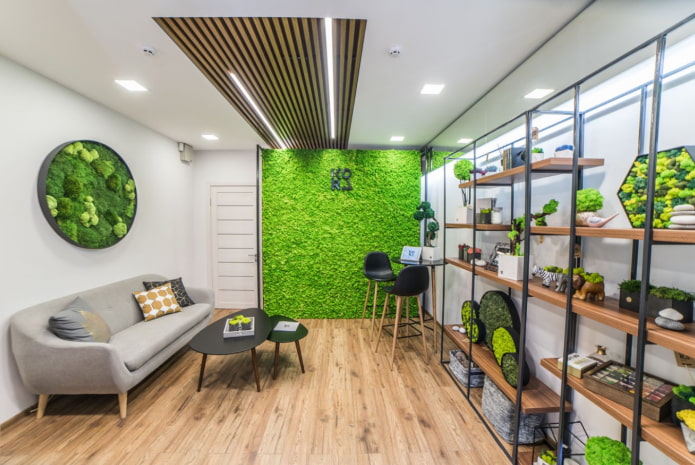
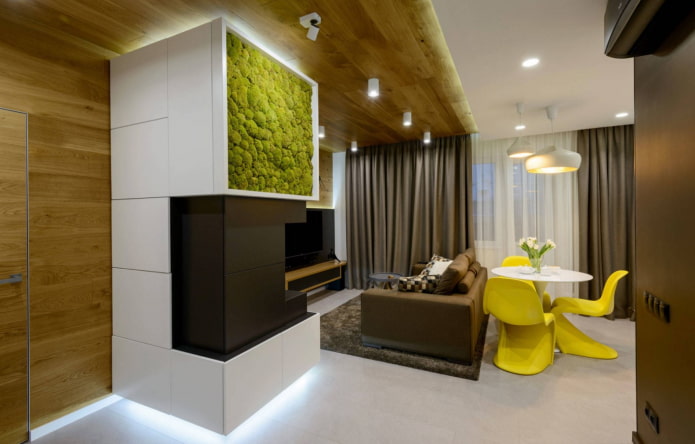
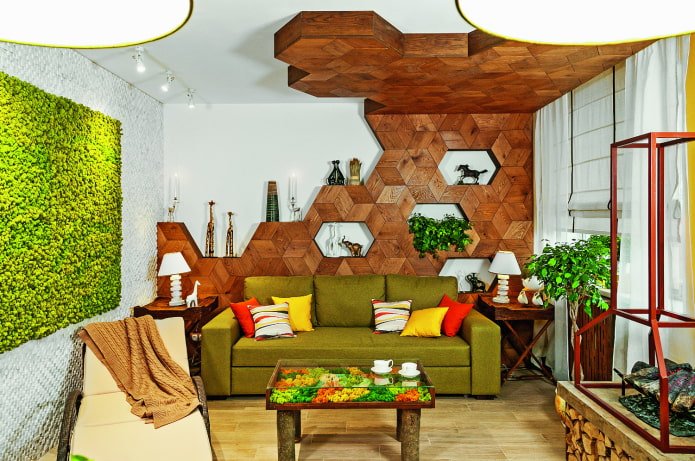
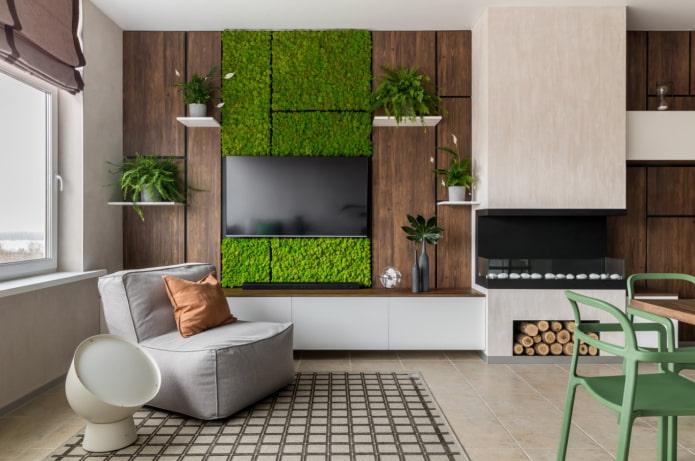
The photo shows the decoration of the TV area in the kitchen-living room
Bedroom
There are not so many bright ideas for the bedroom: place layers of lichen above the headboard, also eliminating in advance the possibility of constantly touching the wall with your head and pillows.
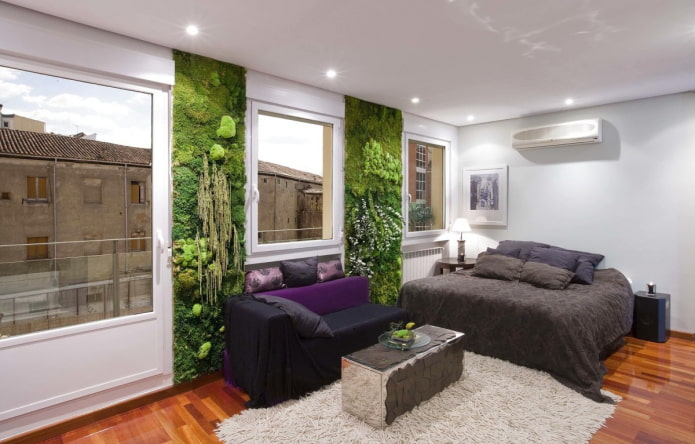
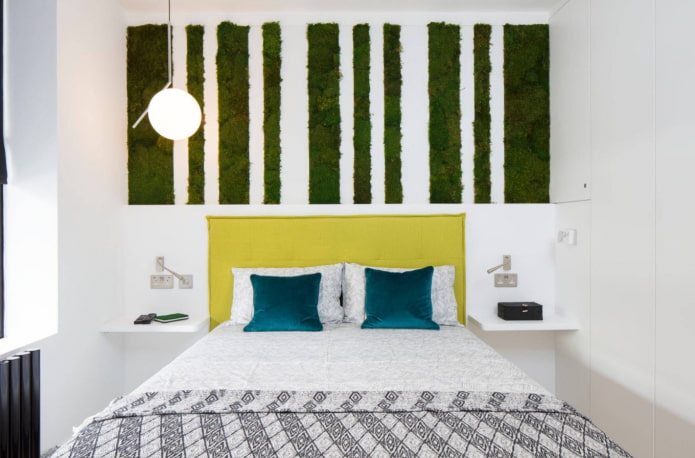
Bathroom
The bathroom is a controversial location for placing reindeer moss, especially stabilized. One of the advantages is high humidity, due to which the plant will require less care. On the other hand, there is a high probability of water getting in, which destroys the protective layer.
Therefore, if you are going to use phytodecor in the bathroom, be careful about its location: it is better to place an artificial imitation directly in the wet area above the shower, but a canned version will do just fine above the countertop or behind the toilet.
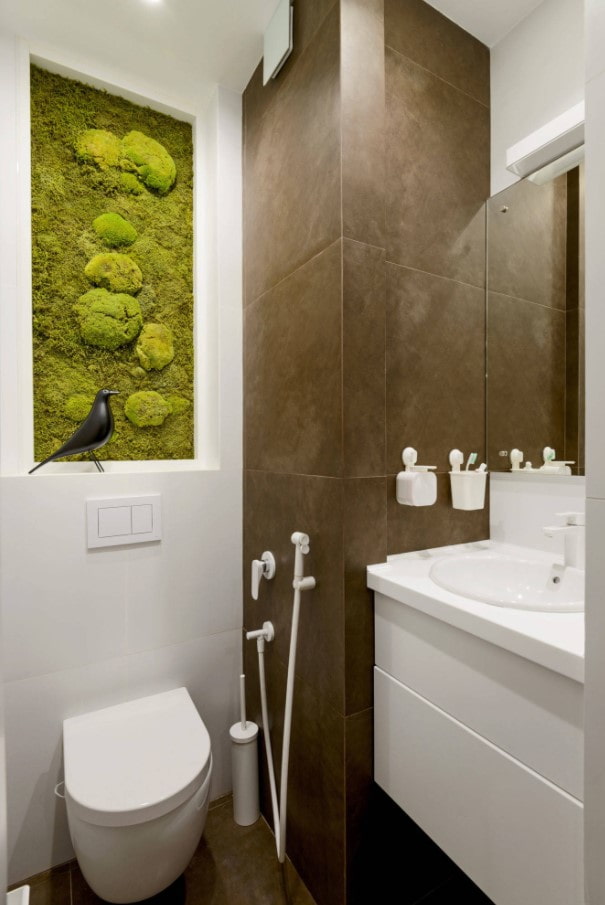
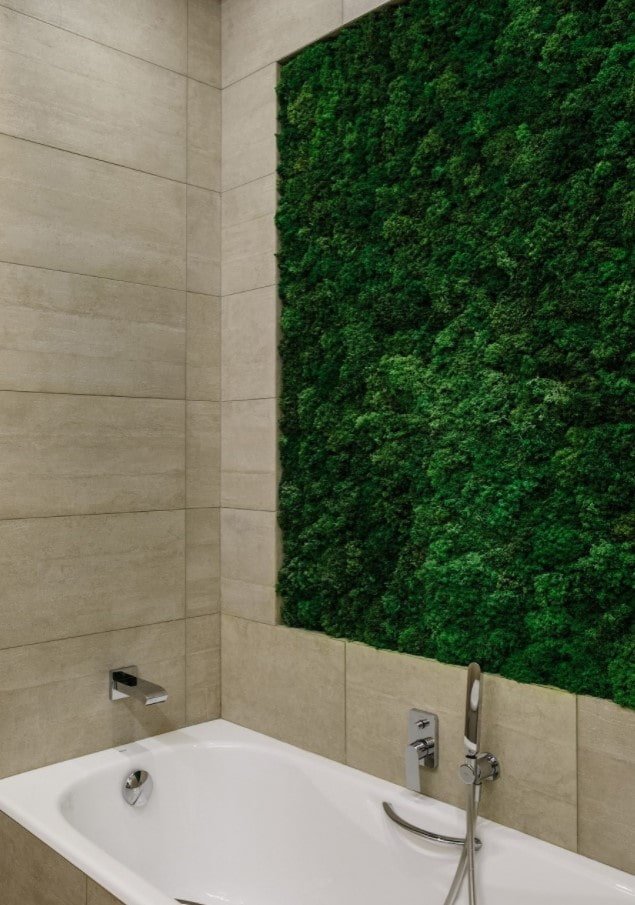
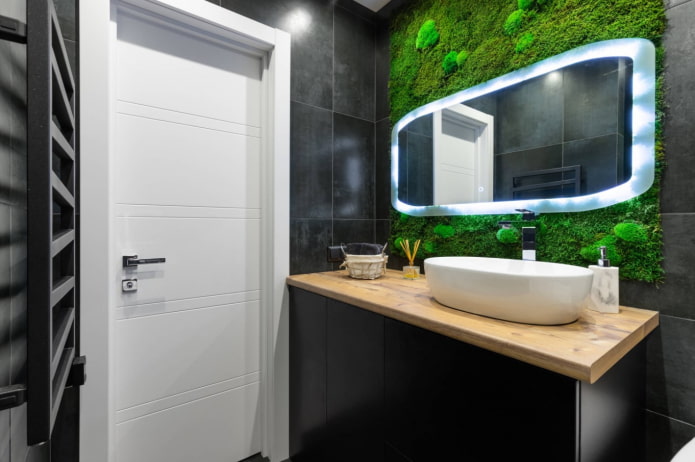
In the photo, the bathroom decor with live plants
Balcony
A loggia is a kind of conductor between a concrete box and fresh air. To enjoy the view from the window and the chirping of birds while sitting at home, it is enough to give the balcony a more environmentally friendly appearance. It is easier to do this with a phytowall.
But do not forget about the requirements: if the loggia is too sunny, not insulated and has a risk of leakage (or is completely open), you can only use an artificial option.
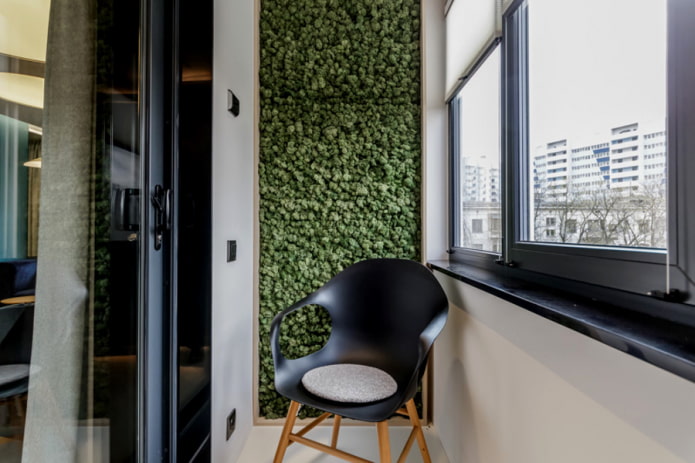
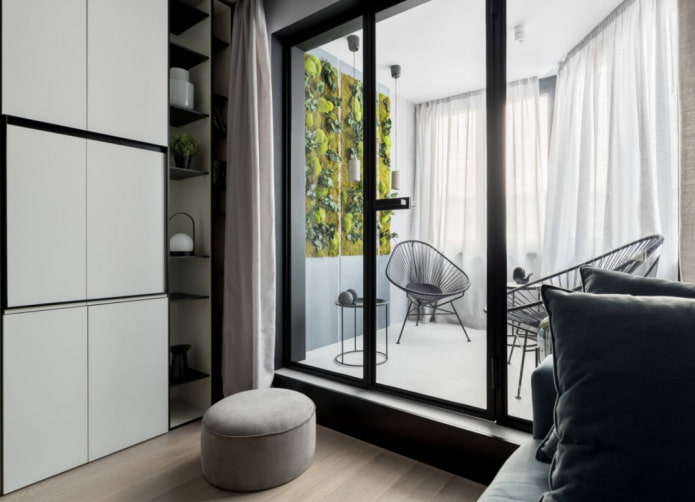
Hallway
Oddly enough, dark corridors are the best locations for living or stabilized moss. There is no sun, water, frost here: you only need to take care of the humidity level.
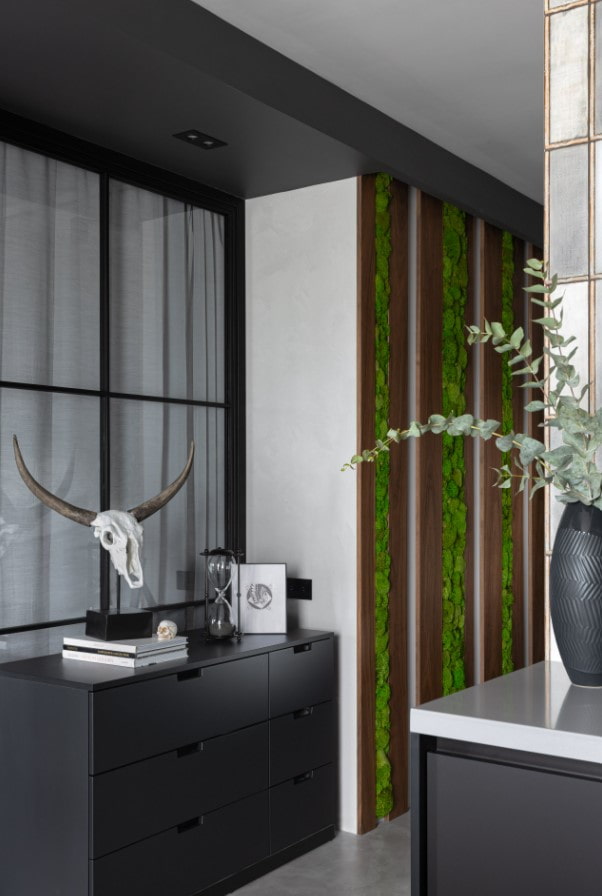
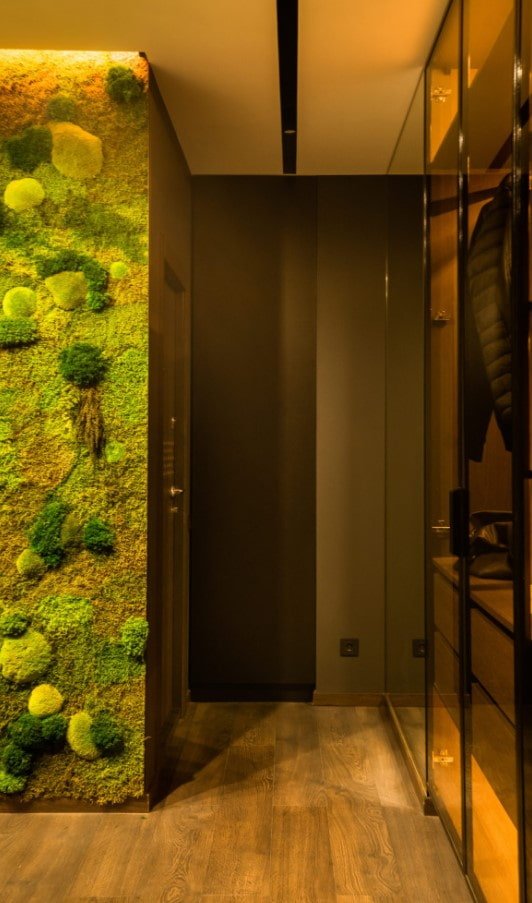
Decorative moss is a great option for decorating any room! Create the right conditions for the composition and it will delight you for many years.
